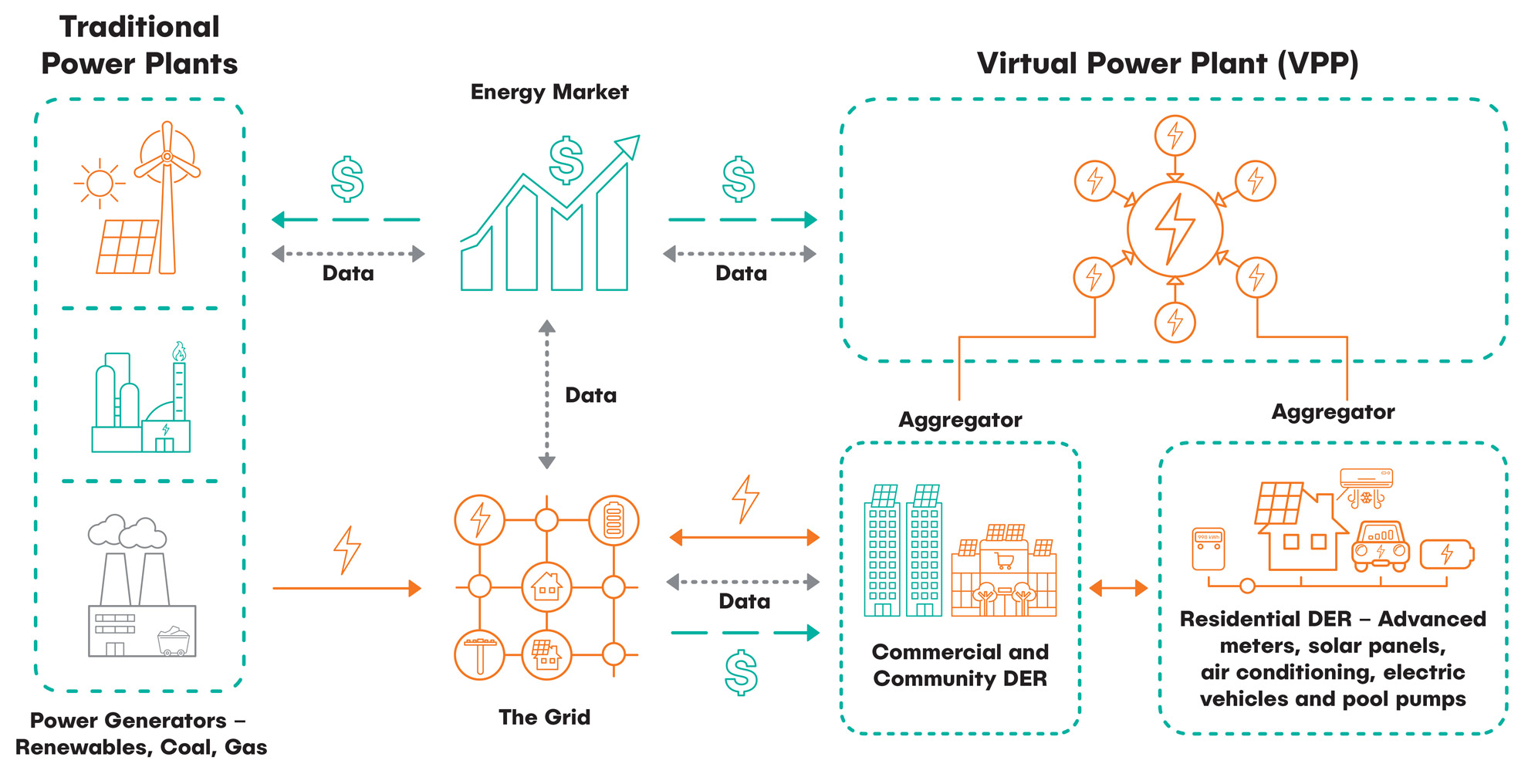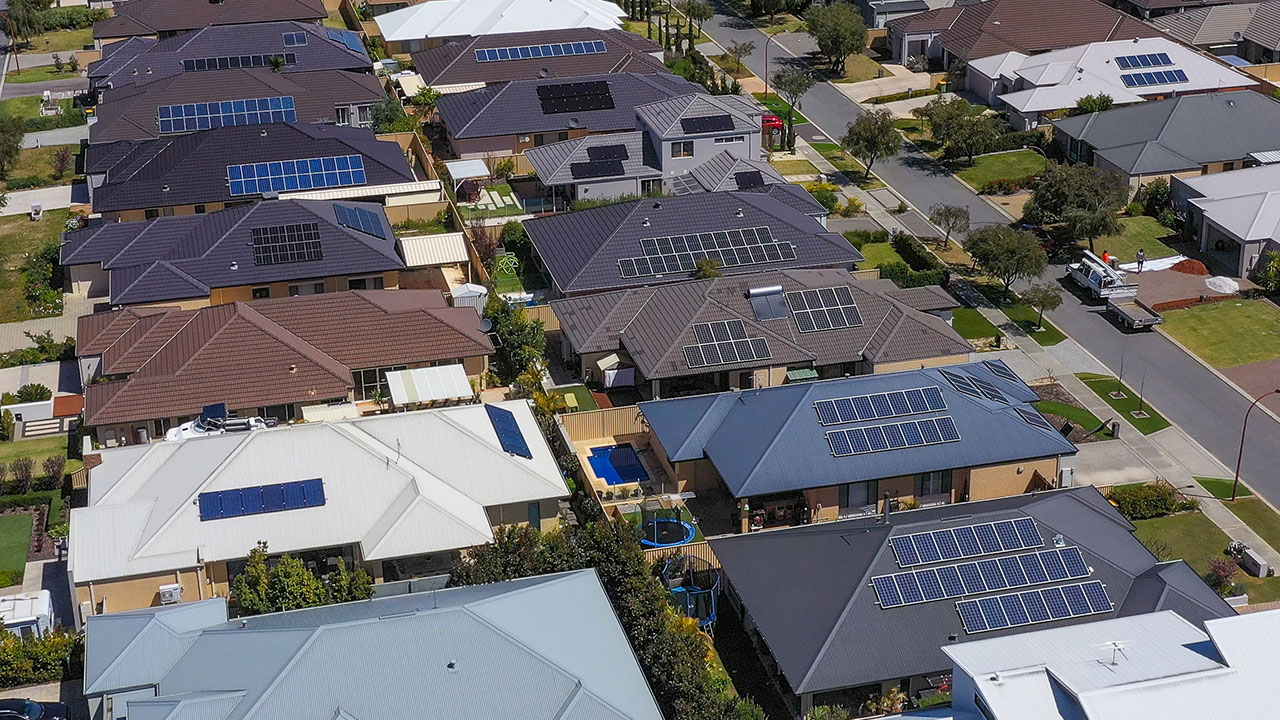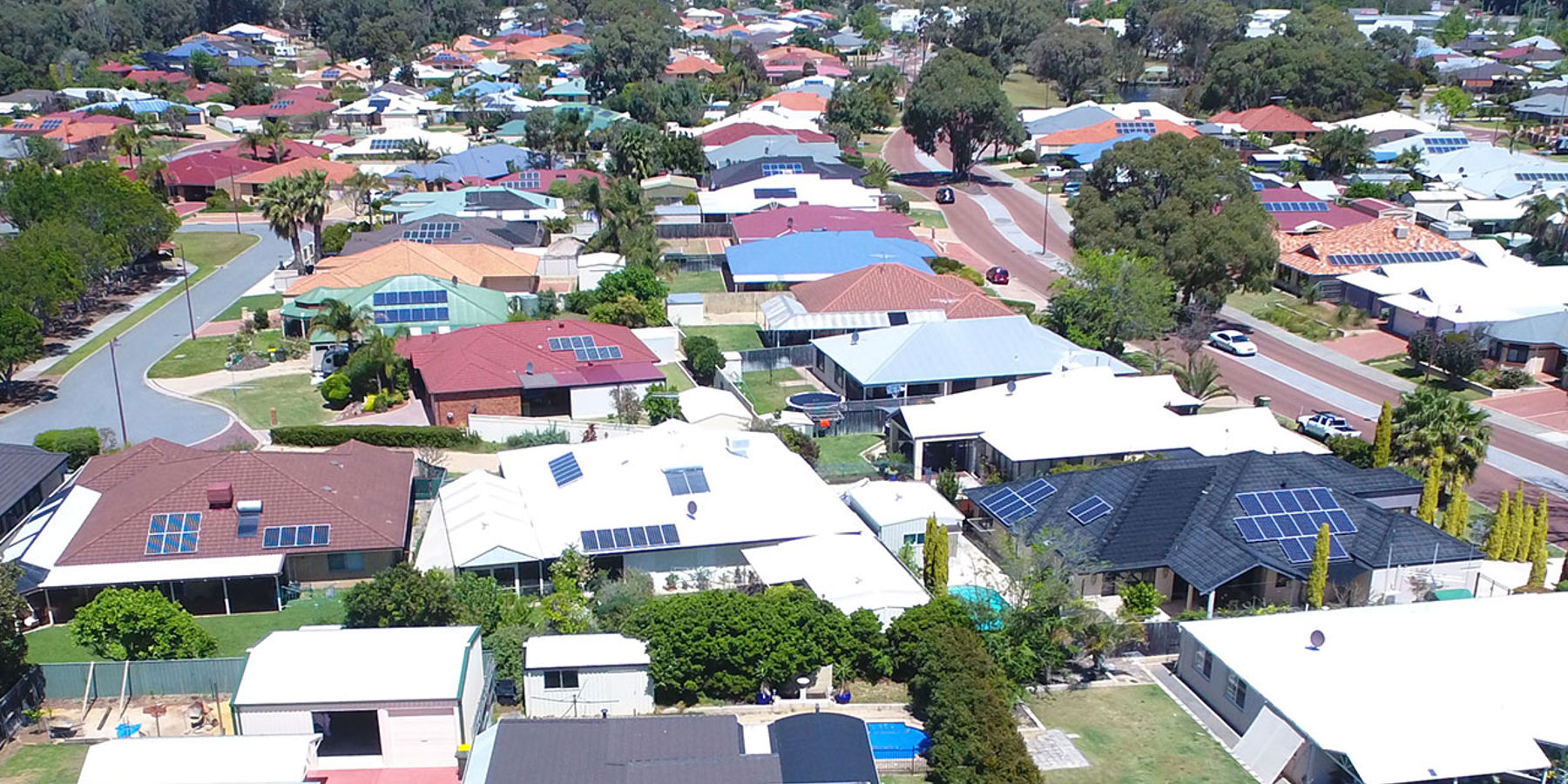They’re the power plants of the future. They have the ability to run energy in the cloud, just not the kind you find in the sky (although the sun has a lot to do with it).
A Virtual Power Plant (VPP) supplies renewable energy on demand by using innovative web-based technology, to remotely link and manage homes with solar and battery storage.
They’re designed to support and feed power back into the grid during peak times, to relieve the load and keep the network stable.
It isn’t a new concept but the technology behind it, and the role VPPs will play in powering our energy future, is.

How do virtual power plants work?
A VPP gets its power from a pool of distributed energy resources (DERs) spread across the network, usually solar panels and batteries connected to homes or businesses that generate and store energy from the sun. So a VPP is where a portfolio of DERs from multiple customers (known as aggregated DER) become available to provide services to the energy market when required.
Using smart cloud-based technology, a VPP can behave similar to a single traditional generator. As this kind of network is virtual, the system can quickly monitor, control and balance electricity demand, supply and storage in response to changing household needs.
Why all the fuss about virtual power plants?
Distributed energy resources have come a long way in a very short time. The installed capacity of rooftop solar panels across our network now exceeds 1.1GW – that’s around three times the size of the largest power station in the South West Interconnected System (SWIS).
This kind of solar uptake is set to continue and with other DERs in the energy mix, it presents both opportunities and challenges for future-proofing the grid.
VPPs are one way we can integrate the grid with renewables, maximise grid efficiency and make energy more affordable for customers.

